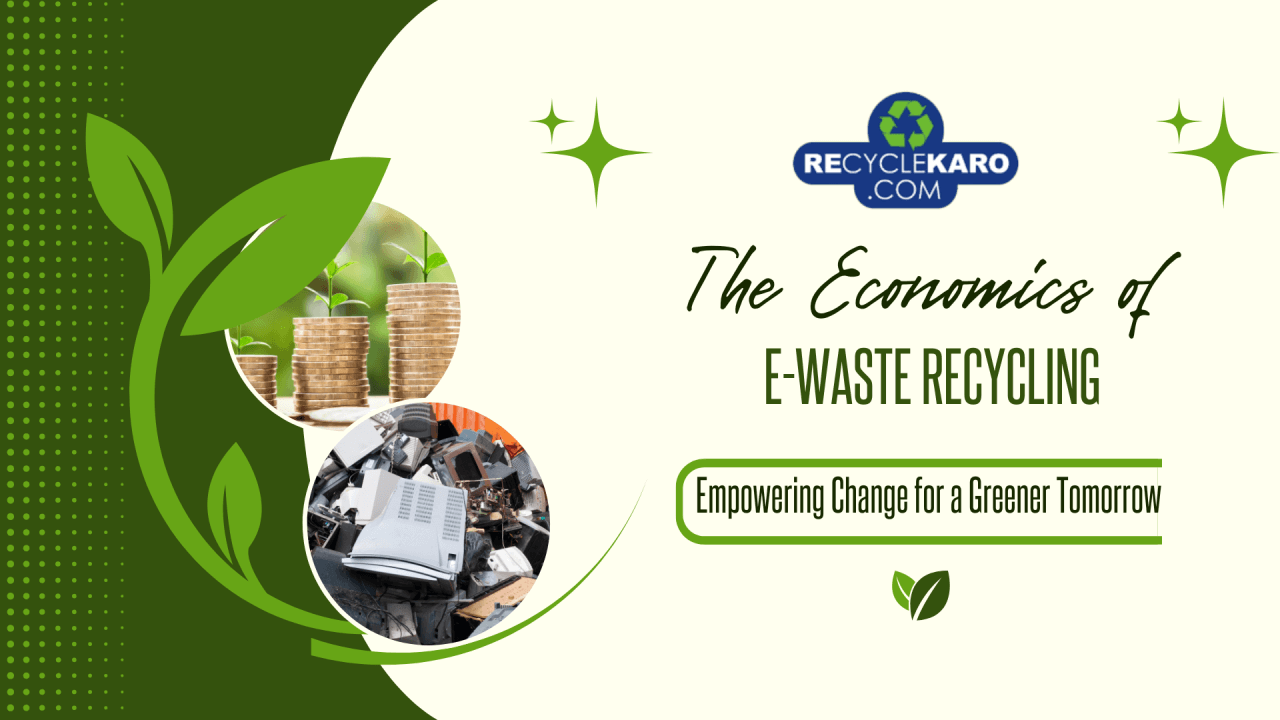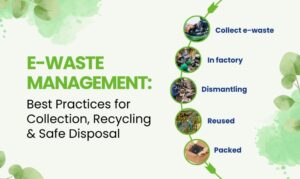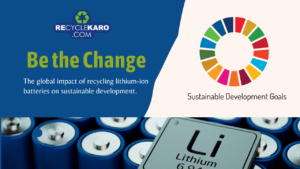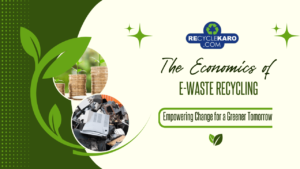The Economics of E-Waste Recycling: Costs and Benefits

Analysing the economics of e-waste recycling includes evaluating the costs and benefits linked to the recycling process, along with considering the wider impact on the environment, society, and the economy. Here’s a breakdown of the essential components:
Costs of E-Waste Recycling:
Collection: One major cost is collecting e-waste from households, businesses, and manufacturers, involving logistics, transportation, and incentives to promote recycling over disposal.
Sorting and Processing: E-waste, a mix of metals, plastics, and glass, necessitates specialized facilities, equipment, and skilled labor for separation and processing.
Recycling Technologies: Investing in eco-friendly e-waste recycling technologies involves costs for dismantling, shredding, sorting, and refining materials.
Environmental and Health Costs: Improper e-waste disposal leads to pollution of air, water, soil, and health hazards for workers. These costs, though not directly borne by recyclers, are crucial in e-waste management economics.
Benefits of E-Waste Recycling:
Resource Recovery: E-waste holds precious metals, rare earth elements, and other metals that can be recycled, reducing the need for new materials, conserving resources, and lowering energy consumption and greenhouse gas emissions.
Job Creation: The e-waste recycling industry can create employment opportunities, both in formal recycling facilities and in informal sectors such as waste pickers who collect recyclable materials from landfills and streets.
Circular Economy: Recycling e-waste supports a circular economy by reusing materials to reduce waste and optimize resource efficiency.
Environmental and Health Benefits: Recycling e-waste reduces environmental pollution and health risks from hazardous substances in electronic devices.
Challenges and Considerations:
Market Dynamics: The economics of recycling electronic waste are impacted by the market prices of reclaimed materials, the need for recycled products, and changes in commodity markets.
Policy and Regulation: Government policies, regulations, and incentives are pivotal in influencing the economics of e-waste recycling. Measures like extended producer responsibility (EPR), landfill bans, and recycling targets serve as incentives for the appropriate disposal and recycling of electronic devices.
Technological Innovation: Innovations in recycling technologies and processes can enhance efficiency, cut costs, and broaden the scope of materials that can be reclaimed from electronic waste.
Public Awareness and Participation: Education and awareness campaigns play a vital role in promoting responsible recycling of electronic devices among individuals and businesses. This, in turn, boosts the availability of e-waste for recycling purposes.
In summary,
In the intricate realm of e-waste recycling, where costs and benefits are intricately intertwined, lies a domain of economic prosperity, environmental stewardship, and social cohesion. To navigate this complex landscape, a harmonious collaboration of various stakeholders including governments, manufacturers, recyclers, consumers, and advocates is essential. Together, they can shape a sustainable vision for e-waste management through shared knowledge and purposeful actions.



